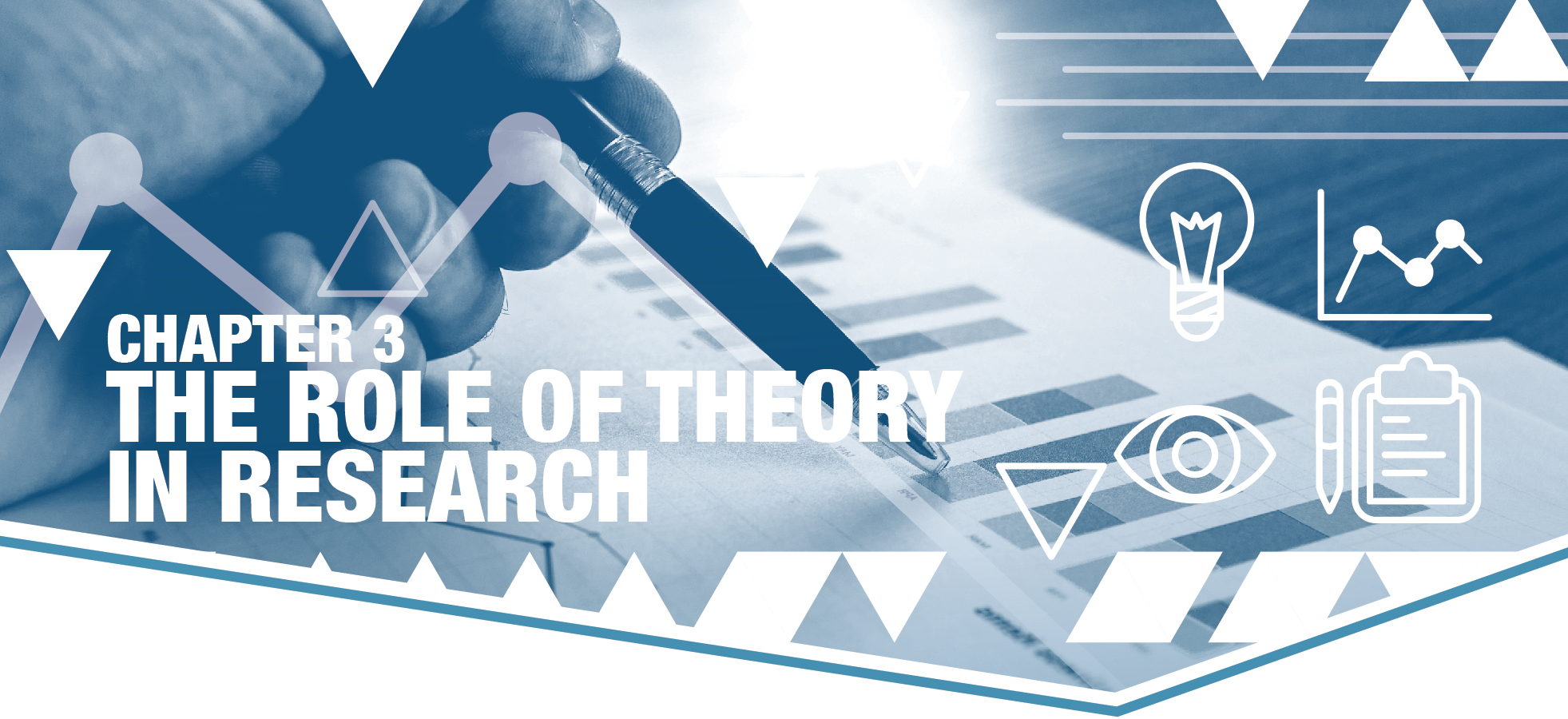3. The Role of Theory in Research
 Students often make the mistake of thinking of “theory” as something grand and complex. This may be because sociological theory classes present them with all-encompassing theories by the field’s intellectual titans, who put forward comprehensive accounts of how societies operate and evolve. But this view of theory can be counterproductive. It may be more useful to think of theory as simply a way of identifying and explaining patterns in what you observe. A lot of the work of theorizing boils down to applying simple logic—that is, drawing inferences (conclusions) based on whatever data you have.
Students often make the mistake of thinking of “theory” as something grand and complex. This may be because sociological theory classes present them with all-encompassing theories by the field’s intellectual titans, who put forward comprehensive accounts of how societies operate and evolve. But this view of theory can be counterproductive. It may be more useful to think of theory as simply a way of identifying and explaining patterns in what you observe. A lot of the work of theorizing boils down to applying simple logic—that is, drawing inferences (conclusions) based on whatever data you have.
In this chapter, we’ll examine some of the mental abstractions you’ll need to employ to think like a researcher—among them, units of analysis, concepts, variables, and hypotheses. More broadly, we’ll explore the connections between social theories and social scientific research methods. We’ll also consider how our analytic and theoretical perspectives might shape, or be shaped by, our methodological choices. In short, we’ll answer the question of what theory has to do with research methods.
When we talk about theories in this chapter, we will discuss social scientists’ broad understandings of knowledge (paradigms), but we will also consider the smaller-scale theories that will typically be most helpful to you, the researcher, as you try to answer questions about the social world. It may be helpful to visualize the ways that both theory and data are nested, like Russian matryoshka dolls, with larger and smaller—more expansive and more restricted—phenomena operating at the same time.[1] When we talk about levels of analysis later in this chapter, for example, we will be looking at phenomena from all the way down at the micro level (such as individuals) to all the way up at the macro level (such as countries).

Conducting good research requires retraining your brain to think like a researcher. Skilled researchers know how to conduct observations in a methodical and systematic way, but they also can think in abstract terms about the importance of that data. They know how to identify hidden concepts and patterns within their data, and how to weave those patterns into theories that can be applied broadly. They move back and forth between conducting observations and generating theories based on those observations. In this chapter, we’ll give you a taste of how that’s done.
Opening chapter image credit: Lukas, via Pexels. Adapted by Bizhan Khodabandeh.
- There are many ways to think of how different theories interact, interlock, and intertwine. One particularly influential perspective, by the French philosophers Gilles Deleuze and Félix Guattari (2009), is that we should not think of individual theories as existing in some sort of hierarchy, with less consequential or more specific theories branching off from a trunk of foundational theories. Instead, they argue, we should think of theories as rhizomes—root structures like a ginger plant, which have no real center (no master theory) and connect with other theories without a single origin, center, or foundation. ↵
Conclusions based on empirical evidence.
Ways of viewing the world and understanding the human experience. Paradigms frame what we know, what we can know, and how we can know it.

